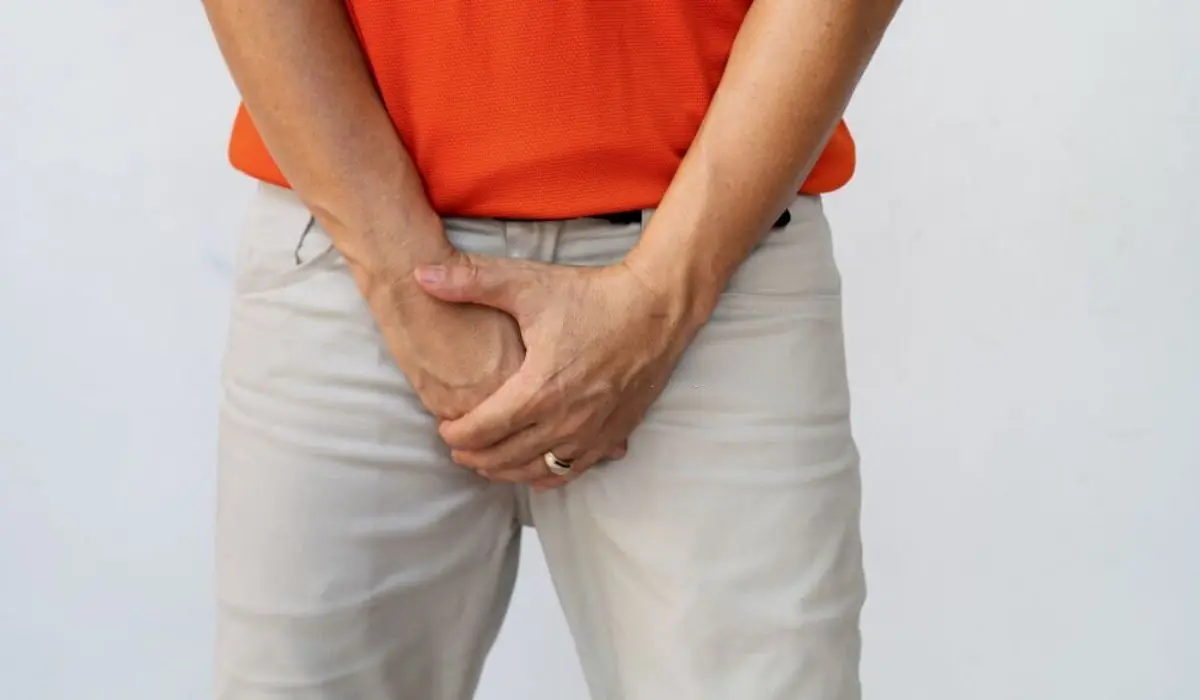Are you constantly rushing to the bathroom, unable to control your bladder? You’re not alone. Overactive bladder is a common condition that affects men of all ages. It’s characterized by frequent and urgent urination, often accompanied by leakage.
The sudden urge to go can disrupt your daily activities and even impact your sleep. But what causes this frustrating condition? Well, the exact cause of overactive bladder in men remains unknown. However, there are various treatment options available to manage it.
Living with an overactive bladder can significantly impact a man’s quality of life. From urinary urgency and urge incontinence to stress incontinence and urinary retention, it’s a constant battle that can leave you feeling frustrated and embarrassed. But don’t worry, help is available!
So if you’re tired of those sudden urges and dealing with dry mouth from medications that promise results but fall short, keep reading. We’ve got you covered with practical solutions tailored specifically for men dealing with an overactive bladder.
Causes And Symptoms Of Overactive Bladder In Men
Overactive bladder symptoms can be distressing for men, but understanding the underlying causes is crucial in determining the most effective treatment approach.

Here are some key points to consider:
🔶 Causes: Several factors can contribute to an overactive bladder in men. Aging is a common cause, as the muscles that control urination may weaken over time. Prostate problems, such as an enlarged prostate or prostate cancer, can also lead to bladder issues. Nerve damage from conditions like diabetes or spinal cord injuries can disrupt normal bladder function.
🔶 Symptoms: Recognizing the symptoms of an overactive bladder is essential for early intervention. Men experiencing this condition often have a sudden urge to urinate that is difficult to control. Frequent urination becomes a regular occurrence, with more than eight trips to the bathroom during the day. Nocturia, which involves waking up at night to urinate, is another common symptom experienced by men with an overactive bladder.
🔶 Other Possible Causes: While aging and prostate problems are prevalent causes of an overactive bladder in men, it’s important to consider other potential triggers. Urinary tract infections can irritate the bladder and lead to increased urgency and frequency of urination. Certain medications, such as diuretics or drugs used for treating high blood pressure, may also contribute to these symptoms.
Treatment Options For Overactive Bladder In Men
🔶 Medications:
- Anticholinergics and beta-3 agonists are commonly prescribed to relax bladder muscles and reduce urgency.
- These medications can help improve bladder control and alleviate symptoms.
🔶 Behavioral Therapies:
- Bladder training exercises can be effective in improving bladder control.
- Pelvic floor muscle exercises, also known as Kegel exercises, can strengthen the muscles that support the bladder.
🔶 Minimally Invasive Procedures:
- Botox injections may be recommended for cases that do not respond to other treatments.
- Nerve stimulation techniques can help regulate bladder function and reduce overactivity.
🔶 Surgical Interventions:
- In severe cases where other treatments have failed, surgical interventions may be considered.
- Urologists may perform procedures to address underlying issues causing an overactive bladder.
There are various treatment options available. Medications such as anticholinergics or beta-3 agonists are commonly prescribed to relax the bladder muscles and reduce urgency. These medications can help improve bladder control and alleviate symptoms.
Behavioral therapies like bladder training exercises and pelvic floor muscle exercises (Kegel exercises) can be beneficial in improving bladder control. These exercises aim to strengthen the muscles that support the bladder.
In some cases, minimally invasive procedures may be recommended. Botox injections into the bladder muscle can help manage overactive contractions when other treatments have not been successful.
Nerve stimulation techniques, such as sacral neuromodulation or posterior tibial nerve stimulation, can also be used to regulate bladder function and reduce overactivity.
For severe cases that do not respond to other treatments, surgical interventions may be considered.
Urologists specializing in female pelvic medicine may perform procedures tailored to address underlying issues causing overactive bladder symptoms in men.
Read More:- How Can You Overcome Pregnant Pain In Inner Thigh?
Lifestyle Changes For Managing Overactive Bladder
Avoiding triggers like caffeine, alcohol, spicy foods, and artificial sweeteners can help minimize the overactivity of the bladder.
By making simple adjustments to your daily routine, you can take control of your overactive bladder symptoms. Here are some lifestyle changes that can make a difference:
🔶 Maintain A Healthy Weight: Regular exercise and a balanced diet not only keep you fit but also alleviate symptoms of an overactive bladder. Shedding those extra pounds puts less pressure on your bladder muscle and reduces the chances of urine leaks.
🔶 Practice Timed Voiding Techniques: Establishing a schedule for bathroom breaks throughout the day helps regulate urinary frequency. Consistently following this routine trains your bladder to hold more urine, reducing the urgency to go.
🔶 Use Absorbent Pads Or Devices: Wearing absorbent pads or using other protective devices provides confidence and protection against potential leaks. These products are discreet and can be easily incorporated into your daily routine.
🔶 Try Pelvic Floor Exercises: Strengthening your pelvic floor muscles through exercises like Kegels can improve bladder control and reduce leakage episodes.
Managing an overactive bladder requires a commitment to lifestyle changes that work best for you.
By incorporating these strategies into your daily routine, you can regain control and live life without constantly worrying about bathroom trips.
Conclusion
In conclusion, treating an overactive bladder in men requires a comprehensive approach that addresses both the underlying causes and the management of symptoms.
By understanding the causes and symptoms of this condition, men can take proactive steps toward finding relief.
Various treatment options are available for managing an overactive bladder in men. These include medications, behavioral therapies, and medical procedures.
It is important to consult with a healthcare professional to determine the most suitable treatment plan based on individual circumstances.
Making lifestyle changes can greatly contribute to managing an overactive bladder. Simple modifications such as reducing caffeine intake, practicing pelvic floor exercises, and maintaining a healthy weight can have significant positive effects on bladder control.
Read More:- How To Increase Blood Flow On Pelvic Floor? Factors Affecting Blood Flow
To effectively treat an overactive bladder in men, it is crucial to prioritize self-care and adopt healthy habits. This may involve implementing strategies such as scheduling regular bathroom breaks, using absorbent products when necessary, and staying hydrated.
Remember that seeking professional advice from healthcare providers is essential for accurate diagnosis and personalized treatment plans. They can provide expert guidance tailored to your specific needs.
By taking action and exploring appropriate treatment options alongside lifestyle adjustments, you can regain control over your bladder function and improve your overall quality of life.

